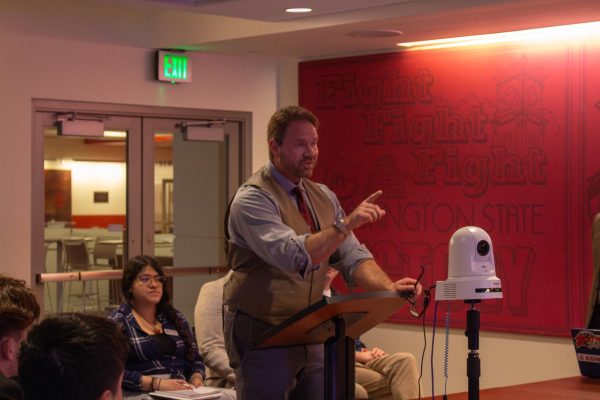Suicides in Whitman follow national increase
Providing mental health services in rural counties challenging due to sparse population
January 12, 2018
Washington’s rural counties have followed a nationwide trend of having higher suicide rates than densely populated areas, and that gap is growing.
Low availability and lack of access to transportation makes it hard for people living in rural areas to get the help they need, mental healthcare professionals say.
Whitman County saw eight suicides and one of its highest rates in 2015, according to the most recently published Washington State Department of Health data. Whitman’s suicide rate was fourth highest among 39 Washington counties, trailing Clallam, Asotin and Cowlitz.
It should be noted, relative to other counties in Washington, Whitman is geographically larger but less populous, which means it takes fewer suicides to drive the rate higher.
The federal government classifies Whitman as a “frontier,” an area geographically isolated from population centers and services.
According to individual media releases from the Whitman County Coroner, there were at least six deaths by suicide in 2017, the majority of which occurred late in the year. The coroner was not available for comment to confirm 2017’s total, and the data has not yet been published.
Mental health resources are more difficult to provide in rural communities, said Whitman County Public Health Director Troy Henderson, similar to the challenges of providing other social services there.
Mike Berney, executive director of Palouse River Counseling, said mental health services must both be available and accessible to be effective. This becomes a challenge for sprawling, sparsely populated counties like Whitman.
A Centers for Disease Control study found communities of varying levels of population density increasing in suicides from 1999 to 2015, though suicide rates in rural areas remained the highest. This difference between urban and rural rates has widened over time.
Berney said school districts are a central hub in Whitman communities. PRC has workers stationed in most of the schools in the county on a regular basis.
Berney noted it becomes harder for people to fall through the cracks if they get help, adding that PRC can better keep track of people in need after they have initially contacted the service.
He said exponentially more people came in to PRC after the Affordable Care Act, as additions to Medicaid allowed the government to cover some counselling costs. Other states, such as Idaho, chose not to opt in to these Medicaid expansions.
Though more people are seeking help, Whitman’s size makes PRC’s mission more difficult.
“Transportation is a big issue,” Berney said. “It’s harder to have all the specific programs. You need to be more of a generalist.”




















